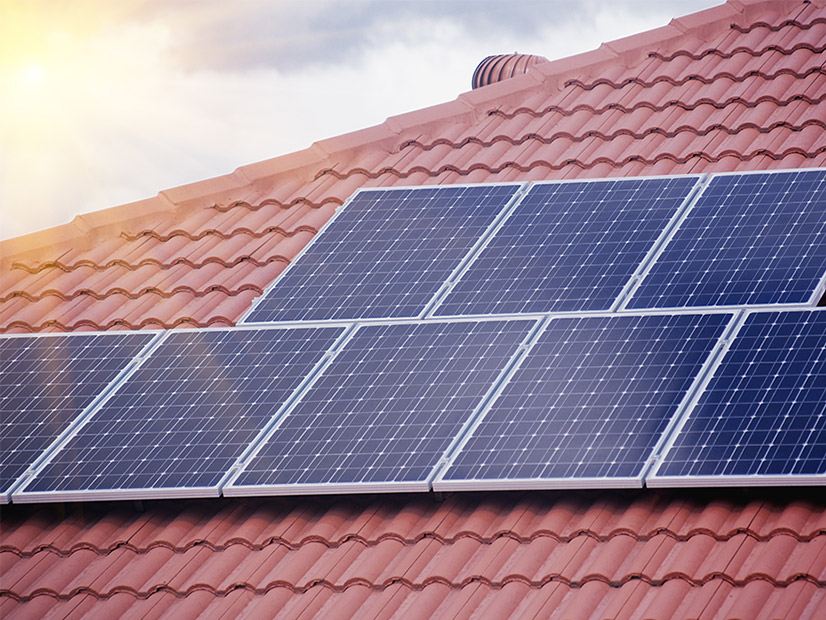A surge in applications for residential solar systems is putting a strain on local building departments — a situation that the National Renewable Energy Laboratory wants to help fix.
NREL has developed software called Solar Automated Permit Processing, or SolarAPP, which provides automated, instant plan review and permit approval for rooftop solar projects.
NREL has been testing SolarAPP since December in a pilot project and expects to offer the free software to interested jurisdictions starting this summer. NREL is part of the U.S. Department of Energy.
“Many permitting officials are receiving 100 or more solar permit applications every week, with 45- to 90-minute review times per project,” Jeff Cook, renewable energy policy and market analyst at NREL, said in a news release. “Automated review through SolarAPP can be a lifeline to overwhelmed staff.”
NREL and the Solar Energy Industries Association (SEIA) hosted a webinar Wednesday to discuss SolarAPP. The webinar also reviewed Solar TRACE (Time-based Residential Analytics and Cycle time Estimator), a data and analytics tool that NREL developed with solar industry partners.
Solar TRACE allows a user to select a city or county and see the median time in days for permit processing, pre-install interconnection approval and inspection. The locale can be compared to surrounding areas or other jurisdictions.
The tool also shows information on the jurisdiction’s permitting process, such as the median cost and whether online permitting is available, and details on utilities serving the area.
SolarAPP
NREL launched its SolarAPP pilot project with three jurisdictions.
In Arizona, participants include Pima County and the city of Tucson, which together handle about 3,600 solar permits a year. A third participant is the city of Pleasant Hill, Calif.
The three participating jurisdictions have approved more than 120 projects so far using SolarAPP, according to draft preliminary results presented during the webinar. About half of those were in Tucson.
Median review times, which were one to 20 business days without SolarAPP, dropped to instantaneous. And all the projects that made it to the inspection stage during the pilot program passed on their first inspection, NREL said.
The three jurisdictions are planning to use SolarAPP for all jobs starting this quarter.
Some jurisdictions, for example, the city of Los Angeles and Clark County, Nevada, have developed their own systems for instant, online solar permitting. Cook said SolarAPP builds on their experience and makes it relatively easy for other locations to adopt automated permitting.
Included in Legislation
SolarAPP has already made its way into a bill in the California legislature.
Senate Bill 617, introduced by Sen. Scott Wiener (D), would require cities and counties of a certain size to implement an online, automated permitting platform, such as SolarAPP, to verify code compliance and issue permits in real-time. SB 617 would apply to residential solar systems of up to 38.4 kilowatts.
“Automated solar permitting helps us streamline the approval process and increases our renewable energy output,” Wiener said in a news release. “If we’re serious about meeting California’s climate goals, we need much more solar and need to deploy it much more quickly.”
The Senate Governance and Finance Committee passed the bill on a 4-0 vote on April 8. It has been referred to the Committee on Energy, Utilities and Communications. SB 617 is co-sponsored by Environment California and SPUR, a San Francisco Bay Area urban policy non-profit.
Solar TRACE
Solar TRACE covers 25 states and includes data for jurisdictions that have at least 10 permitted projects per year. The tool has data from 2017-2019. Cook said he expects NREL to receive funding to add data from 2020 and 2021.
Post-installation interconnection data will be added soon, he said.
Solar TRACE is intended to address the lack of transparency surrounding permitting, inspection and interconnection review times nationwide, Cook told NetZero Insider.
Despite plummeting prices for solar photovoltaic systems over the past decade, non-equipment costs such as permitting, inspection and interconnection “remain stubbornly high,” NREL said in a news release. Review and approval time can add weeks or even months to the installation process and increase project costs, which are passed to homeowners, NREL said.
And from an industry perspective, the Solar TRACE data may help solar companies make market decisions, Cook said.
“Some installers avoid jurisdictions that they think are onerous,” Cook said during the webinar. “That reduces the amount of opportunity for homeowners to get solar if they want it.”
Peter Jackson, chief electrical inspector for the city of Bakersfield, Calif., said Solar TRACE is useful for revealing structural problems in the permitting process. But Jackson advised using caution in interpreting the data. For example, he said, some cities might just be rubber-stamping permits.
“I know of jurisdictions that would get graded very highly with this database, because they don’t do their jobs,” Jackson said. “It’s not just about speed, it’s about speed doing your job correctly.”
In other cases, integrators might be doing a good job by planning ahead and applying for permits early, he said. But for someone looking at the database, it might appear the integrator is doing poorly by taking too long.
Jackson said it takes a certain amount of time to responsibly do a solar installation.
“Burning buildings aren’t green, nor are they good for business, nor do they help interconnection time,” he said.






